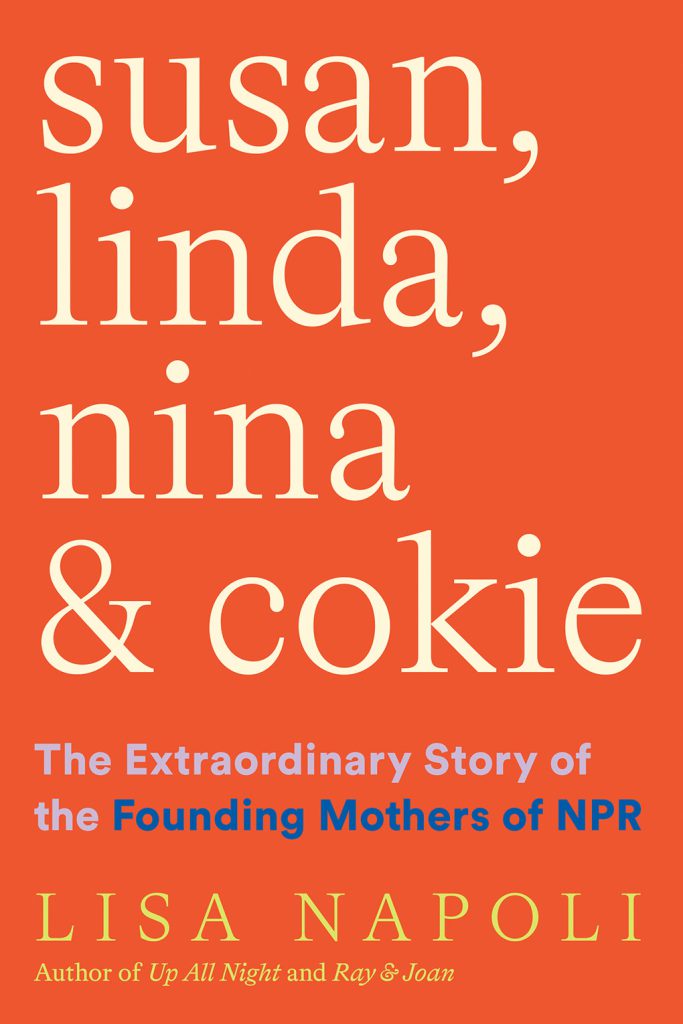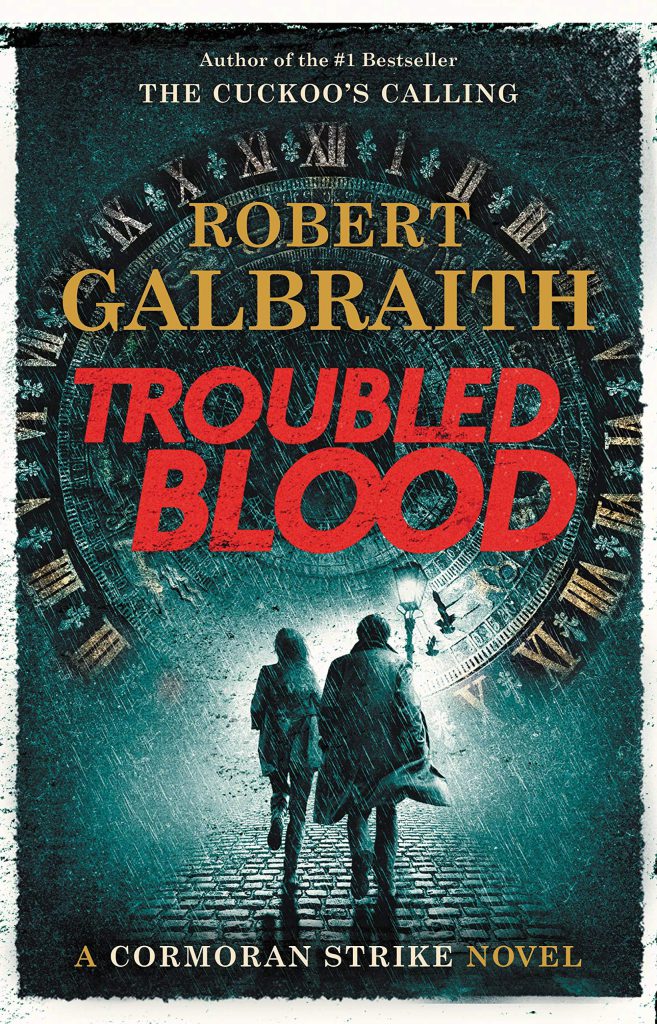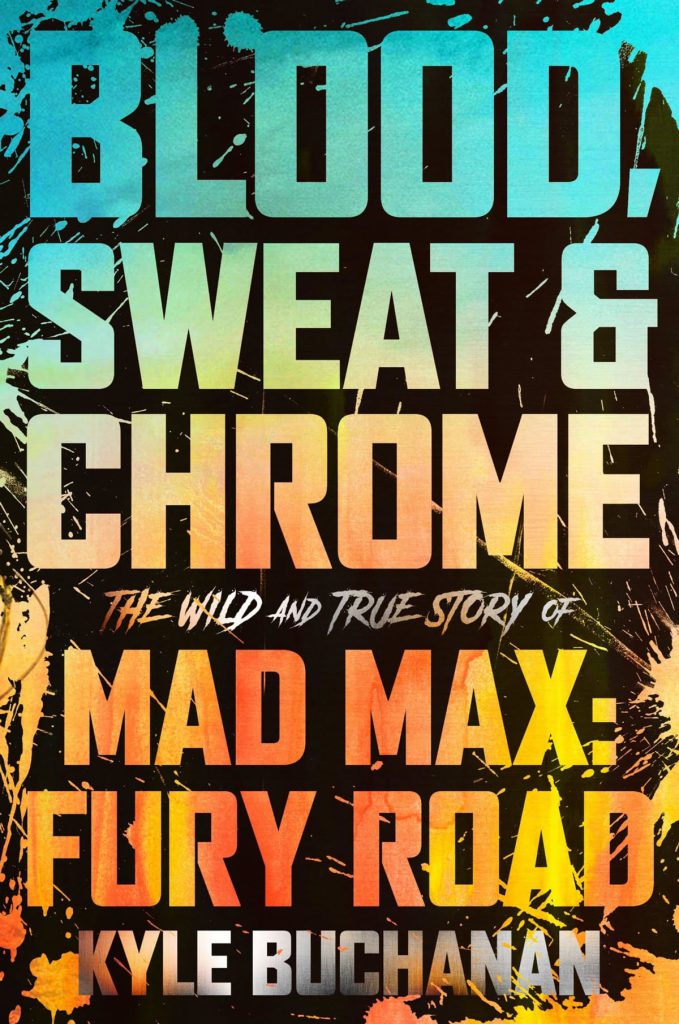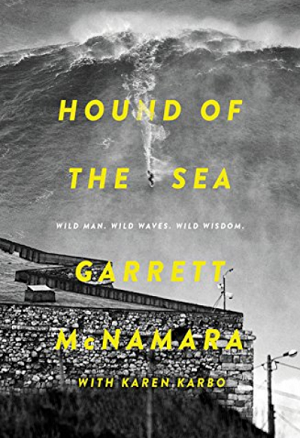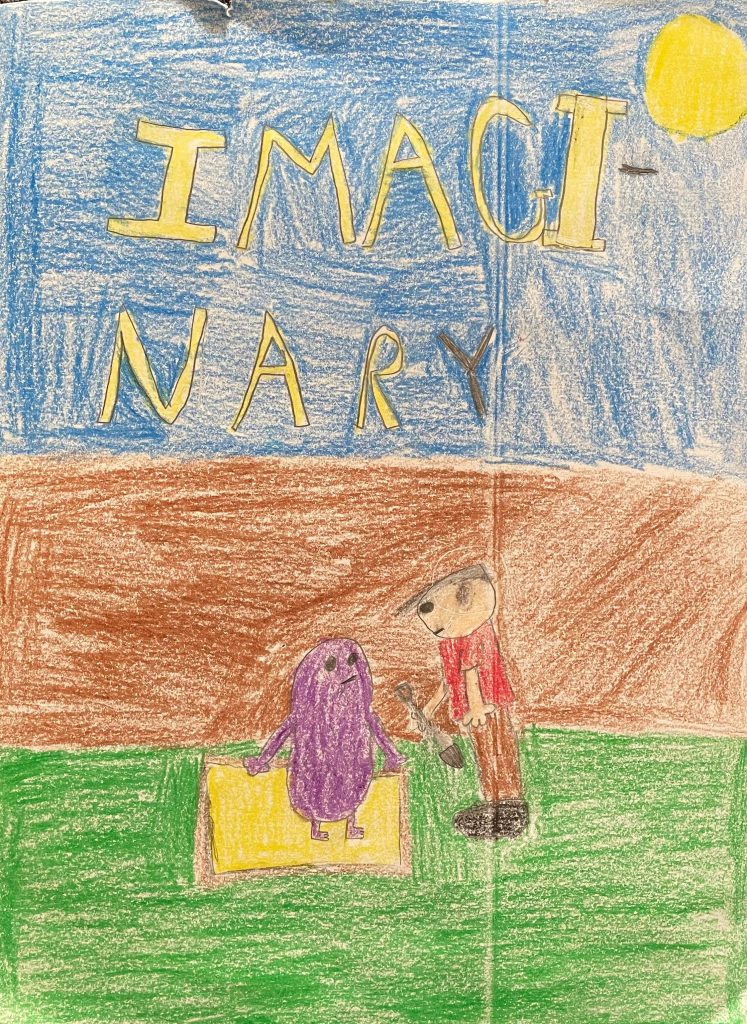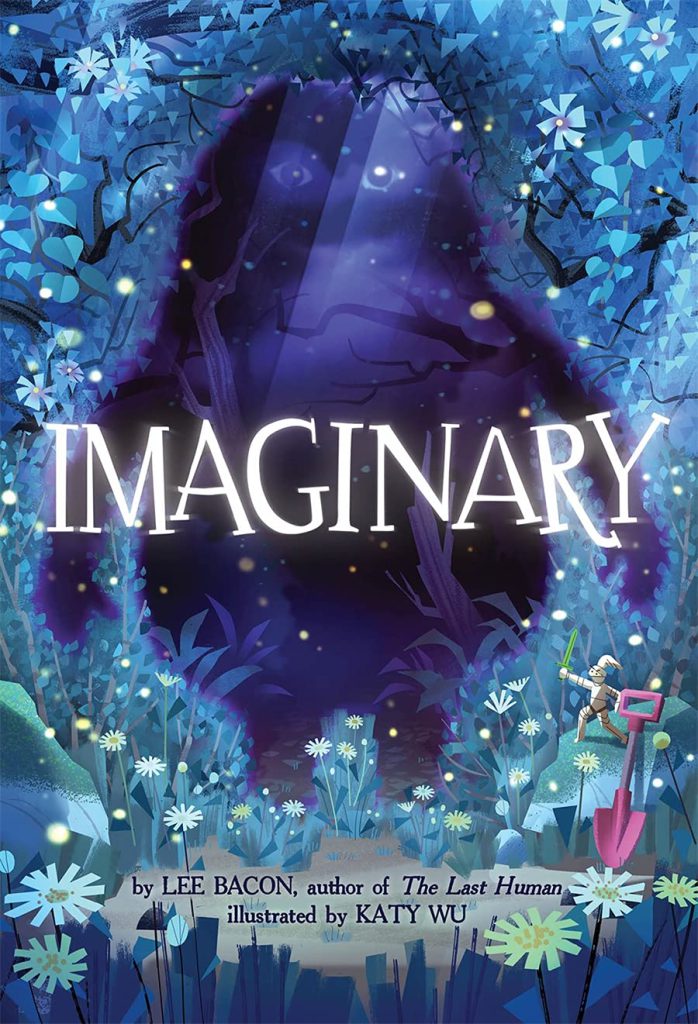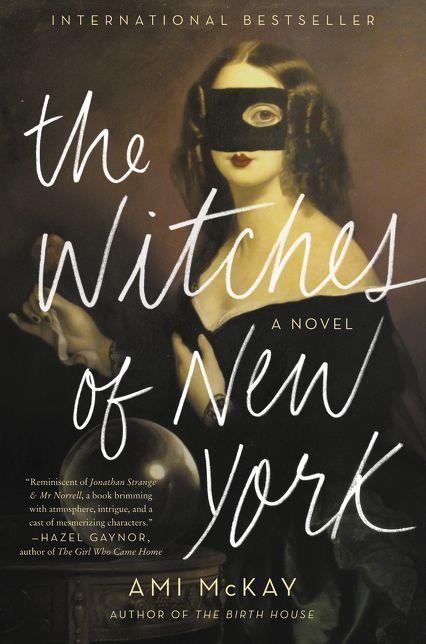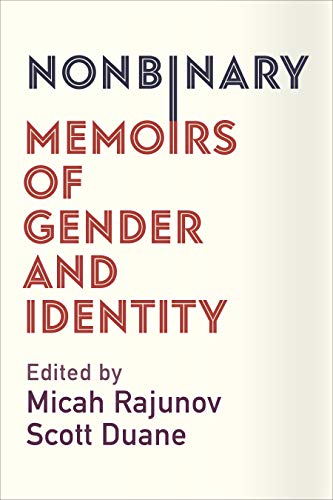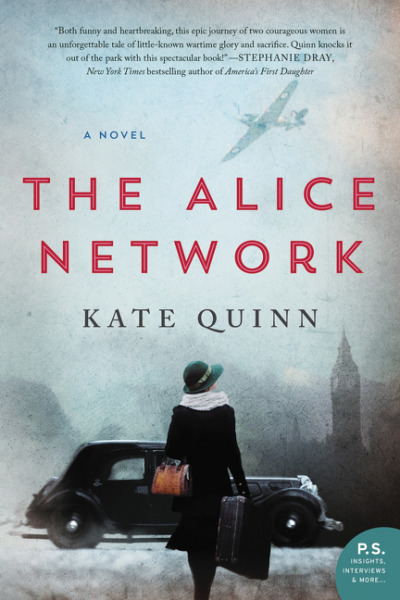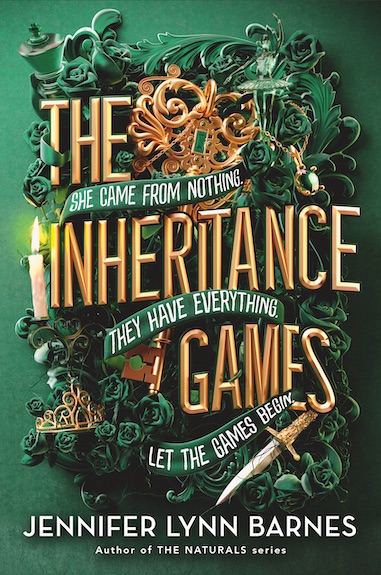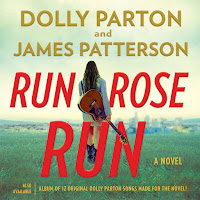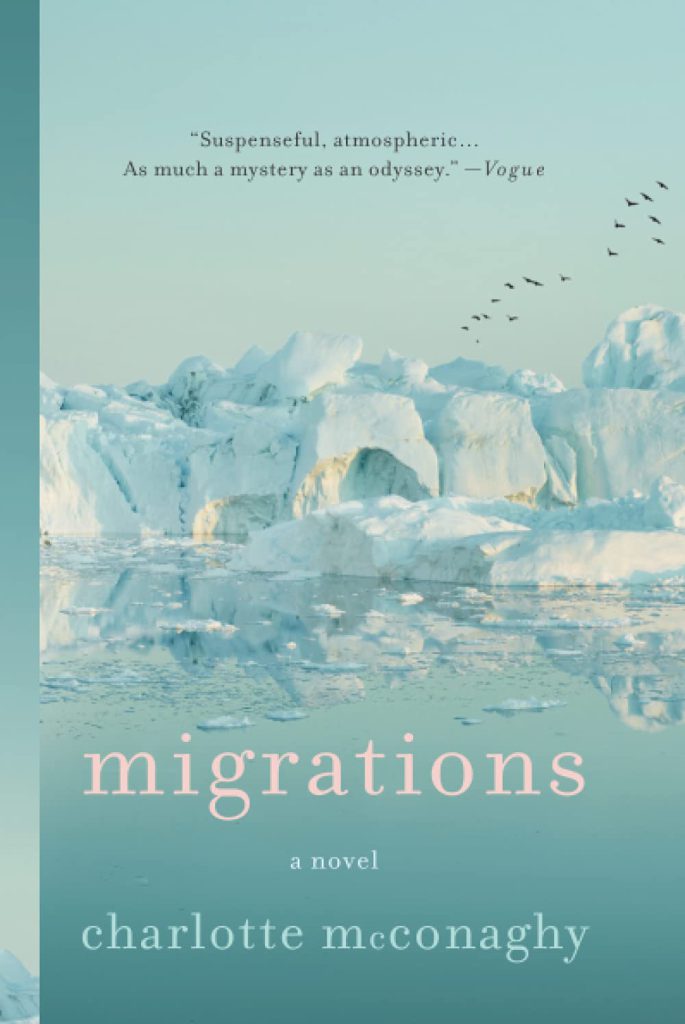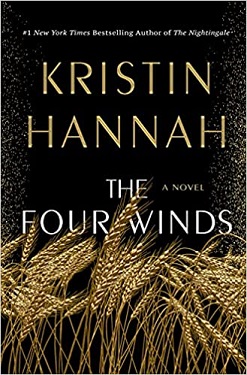Search the Blog
Categories
- Books & Reading
- Broadband Buzz
- Census
- Education & Training
- General
- Grants
- Information Resources
- Library Management
- Nebraska Center for the Book
- Nebraska Memories
- Now hiring @ your library
- Preservation
- Pretty Sweet Tech
- Programming
- Public Library Boards of Trustees
- Public Relations
- Talking Book & Braille Service (TBBS)
- Technology
- Uncategorized
- What's Up Doc / Govdocs
- Youth Services
Archives
Subscribe
Tag Archives: Friday Reads
Friday Reads: The Long Weekend, by Gilly Macmillan
I picked up The Long Weekend from the new audiobook display at the library, and I got what I wanted: a fast-paced, engrossing thriller to listen to on a long drive. The cover boasts “Three couples, two bodies, one secret,” and by the end of the first disc, I had counted way more secrets than that. Also, one of my favorite ingredients in thrillers—is there something supernatural happening, or is one of the characters just trying to make it seem like there is? (Is that a shapeshifter lurking near the barrows, or is it just someone who’s not happy to see you?)
The Long Weekend is a story about well-off people being not that nice to each other, except it is British, so I guess I’d call them posh people. A group of friends plans a weekend getaway to the North of England, but some of them are planning more than others are, and betrayals overlap like a dense fog. There are enough twists and turns to keep me guessing, and enough humor to keep the story popping along. I appreciate Macmillan’s storytelling strategy, like how we know pretty quickly who committed a murder—but not who their victim is. The character newest to the friend group is jealous of the closeness of the others, but then we learn how the original friends in the group also feel estranged from each other. One character is shown to be quite ruthless and cunning—and then they are manipulated by another party outside of the friend group.
There are multiple characters narrating the action, and I wish the audio tracks had been edited to indicate that. The audio is all recorded by Olivia Poulet, who has a fantastic reading voice, but it would have been helpful to not have the character narration switch within tracks, because the listener regularly has to figure out which character is narrating, and a new track starting would have been a good way to indicate that switch in character narration. This is not as much of a problem as it sounds like it would be—as clever and twisty as the story is, there is a formula here, and nothing remains indecipherable. Macmillan knows how to give us information about the characters and their relationships in a paced way that keeps us interested in learning more.
Macmillan, G. (2022). The long weekend: A novel.
Friday Reads: Susan, Linda, Nina, and Cokie: The Extraordinary Story of the Founding Mothers of NPR by Lisa Napoli
This book was released to coincide with the 50th anniversary of NPR. After reading several biographies on Ruth Bader Ginsberg and Gloria Steinem, the gender discrimination incidents presented here were not revelatory; however, the history of each of the four women was worthwhile and interesting.
Their individual journeys to what their male counterparts contemptuously called the "Fallopian Jungle" (the female section of the newsroom) required tenacity and the willingness to work long hours learning on the job.Unfortunately, one sentence derailed my experience with this book and lead me down a rabbit hole of research. In July 1974, Nina Totenberg, “polled 200 hundred people on the Hill” to write a story called “The Dumbest Congressman.”
“Among the dumb? Sen. Roman Hruska from Nebraska was so dumb he’d actually said that ‘mediocrity deserves a seat on the Supreme Court’ (Napoli, 109). I’m uncertain if this next sentence was in Totenberg’s article or added by Napoli but the charge against Hruska continues “(two strikes: Hruska owned a chain of dirty movie theaters, yet had sponsored an anti-smut bill.)” (109). Regardless who is calling out Hruska’s hypocrisy, what piqued my curiosity was getting to the bottom of the theater question. A Nebraska senator owning what I would interpret as pornographic theaters was something I’d never learned in my Nebraska history. Trust, but verify. A New York Times article from 1970 titled “Rival Charges Hruska Peddles Smut” reveals there was more to the story:
In what may be the region’s bitterest election contest, Senator Roman L. Hruska of Nebraska, a noted opponent of violence and pornography, has been labeled a smut peddler and glorifier of brutality. The man who seeks to unseat him, former Gov. Frank B. Morrison, says the 66-year old Republican is using the screens of five drive-in movie theaters he partly owns in this area to show horror scenes in such films as The Blood Drinker and lewd situations in such works as Catch 22. Despite Senator Hruska’s continued explanation that he is merely an investor in a chain of Nebraska theaters and does not participate actively in the management (Mr. Morrison) continues to imply the Senator votes against pornography on the Senate floor but peddles smut in his theaters.” (Drummond Ayres Jr.)
An investor in several drive-in theaters definitely isn’t the same thing as owning a chain of dirty movie theaters. I called Kay Schmid, the director of the Roman Hruska Public Library. She provided the following political advertisement titled “At the Movies with Roman Hruska” published in the Columbus Telegram on October 30, 1970. The advertisement quotes Jack Anderson of the Washington Post and was paid for The Concerned Citizens of Nebraska:
When Senator Roman Hruska preaches about the evils of violence and pornography, he knows whereof he speaks. He is a partner in a movie chain that has recently featured skin flicks like Girl on a Chain Gang and violence like The Blood Drinker. The pious Nebraskan has sponsored numerous bills against smut and violence but Hruska’s “common decency and good morals” apparently do not impel him when his pocketbook is affected. The senator wouldn’t say how much he gets out of the Douglas Theaters, except that it is “making a profit.” Asked whether he would make a public accounting, the crusader for public morality said, “Heaven’s No! It’s none of the public’s business as long as there is no conflict of interest.” Senator Hruska incidentally voted against a Senate Standards of Conduct Amendment, which would have required Senators to report their sources of income.
However, it was amassed, Hruska’s fortune was enough to have a public library (David City), a federal courthouse (Omaha), and law center (Lincoln), named for him. You can draw your own conclusions about Hruska’s values, but Napoli or Totenberg’s throwaway sentence about “owning a chain of dirty movie theaters” is inflammatory and inaccurate. It left me wondering if Napoli made any other statements that might require fact checking.
Napoli, Lisa. Susan, Linda, Nina & Cokie: The Extraordinary Story of the Founding Mothers of NPR. Blackstone Publishing. 2021.
Friday Reads: Troubled Blood by Robert Galbraith
I’ve been rereading the Cormoran Strike series by Robert Galbraith, in anticipation of the next book in the series. This is a tradition I have with this series and others, I love revisiting my favorite books. Right now I’m on the 5th book, “Troubled Blood.” I love the multidimensional characters that are both lovable but flawed, making them come to life for me. The combination of the personal lives and stories of the main characters and the professional pursuit of solving one major mystery in each book will keep readers invested in the story as the series continues. In Troubled Blood, the Strike Detective Agency is hired to look into a missing person’s case from 1974, and a trail that went cold decades ago. Without a body to even prove death or foul play, the possibilities of what happened to Margot Bamborough are seemingly endless. The search through old police files and the troubled mind of the original detective on the case will make their search for the truth even more difficult. This book and series are perfect for readers who love mysteries and procedural dramas. I highly recommend starting at the beginning with “The Cuckoo’s Calling,” for the full story.
Galbraith, Robert. Troubled Blood: A Cormoran Strike Novel. Mulholland Books. 2020.
Posted in Books & Reading, General
Tagged Book Review, Cormoran Strike, Friday Reads, mystery, Reading, Robert Galbraith, series, Troubled Blood
Leave a comment
Friday Reads: Son of a Gamblin’ Man by Mari Sandoz
Son of a Gamblin’ Man is Mari Sandoz’s historical novel about the gambler, entrepreneur, promoter, controversial, bold, and visionary John J. Cozad. Book descriptions note that it is Robert Henri’s story. It is, but the book is every bit as much the story of an ambitious man who chooses to develop a community in mid-Nebraska near a 100th meridian sign, a Pacific Railway Act of 1862 benchmark. Every village, town, and city has its own story. The community that became Cozad, Nebraska, has an especially unique and colorful history. While fictional, Son of a Gamblin’ Man includes real people, experiences, and events.
The book evolves from the 1870s with John J. Cozad’s relentless recruitment of settlers to establish this new mid-Nebraska community. Described with much exaggeration, the imagined community was not the paradise described and promised to easterners hoping for a better life. Settlers experienced – as settlers did elsewhere – harsh winter months, drought, illnesses, hunger, massive grasshopper invasions, prairie fires, lawlessness, and more. Some left. Others stayed on to overcome the many challenges of life in a new and growing community.
There were also the challenges, clashes, and violence that emerged between cattlemen and settlers. The need for feed and the open prairie were an on-going source of conflict. And there was the early rivalry that developed between Cozad and Plum Creek (later to become Lexington).
The book is rich in detail with descriptions of family and community life in the latter part of the 1800s. Within is the story of the Cozad family, friends, neighbors, and enemies. As described in the book’s introduction, the story is essentially that of Robert, John Cozad’s youngest son. Robert, still in his teen years, was given responsibility for local management of family business and properties. These tasks were needed during his father’s frequent business absences and his brother’s location in Denver selling hay. Robert had an early fascination with stories and art. He imagined, wrote stories, and drew throughout childhood. Later came fame as an internationally recognized artist and teacher. The Robert Henri Museum, in Cozad, is a remarkable destination for viewers of his art.
Sandoz, Mari. Son of a Gamblin’ Man: The Youth of an Artist. University of Nebraska Press. 1960.
Friday Reads: Blood, Sweat & Chrome: The Wild and True Story of Mad Max: Fury Road
Mad Max: Fury Road is a post-apocalyptic dystopian movie with an outwardly simple plot: the protagonists escape captivity and race towards a destination, The Green Place, where they will be safe from their captors who are in murderous hot pursuit. After discovering The Green Place no longer exists, they go back the way they came, taking the fight to their oppressors in order to return to the only viable home they know, in the process transforming from property to heroes who make it rain with redemption. It is the archetypal hero’s journey, but in the hands of director George Miller, it arrives customized with outrageous visionary style and much chrome. This book, Blood, Sweat & Chrome: The Wild and True Story of Mad Max: Fury Road by Kyle Buchanan, is an oral history of the making of the movie. On every page, somebody involved with the film discloses something that reinforces how unlikely it is that it ever got made.
The captivity/desperation/redemption arc in Fury Road could function as a metaphor for its own production. Starting around 1997, multiple studios tried to get it made, each one eventually glad to get it off their hands until the game of heavy metal musical chairs ended within the studios of Warner Brothers. Mel Gibson, Heath Ledger, Michael Fassbender, Johnny Depp, and even Eminem were at various points seriously considered for the role of Max, which eventually went to Tom Hardy. Gal Gadot, Jessica Chastain, and Uma Thurman were slated to play Furiosa, the true main character of the movie, before Charlize Theron won the role.
Immortan Joe, the chief villain, was initially blue. All of the stunts observable in the movie were created with real, ornately customized vehicles and real people. The shoot was moved from Australia to Namibia because a historic amount of rain turned the inert wasteland into fields of wildflowers. The flame-throwing electric guitar wielded by Immortan Joe’s mutant bugler had to be redesigned because director Miller wanted it not only to shoot flames but to actually play notes. It then weighed eighty pounds, which is why the bugler character, The Doof Warrior, dangles throughout the movie from a bungee in front of the wall of speakers fastened to the Doof Wagon…et cetera.
The long gestation of the movie allowed Miller to get every second visualized. This fever dream manifested itself as 3,500 storyboard panels; there was no real script. This was a problem for the actors, who did not necessarily know why they were doing what they were doing at any given time; only George Miller knew. Because they were filming from basically a graphic novel, panel by panel, the takes were often only a few seconds. Once these pieces were edited together, the method resulted in action of a remarkably frenetic pace, perhaps the reason why many cite Fury Road as the greatest action movie of all time. But it could have been the greatest disaster in the history of film.
Buchanan, Kyle. Blood, Sweat & Chrome: The Wild and True Story of Mad Max: Fury Road. New York: William Morrow & Company, 2022.
Friday Reads: Hound of the Sea: Wild Man. Wild Waves. Wild Wisdom.
NOTE: I wrote this draft in 2017, and shelved it. With the recent (2021) release of the HBO documentary, 100 Foot Wave, I’ve revived it.
There aren’t a lot of books written about surfers, and certainly not a lot of books about surfers in my local library. Some of the books are clearly written primarily by the co-authors, and come across as literary braggadocios that are mostly turn-offs. At the least, they run counter to a more modest surfer code. So after starting but not finishing a couple of these, I then picked up Hound of the Sea: Wild Man. Wild Waves. Wild Wisdom, written by big wave surfer Garrett McNamara (GMac) and Karen Karbo. It is a worthy effort, and only a little bit of braggadocio, coming across as a seemingly honest portrayal of GMac’s childhood (which is interesting even without the surfing), rise among the surfing circuits, and his eventual record setting big wave rides.
I had originally wanted something about surfing legend Kelly Slater, arguably the most dominant athlete in his sport, or even any sport, as illustrated by this fantastic infographic. Some facts worth extrication: GOAT Slater has won more world titles than any athlete in any major sport, holds the record for being both the youngest and oldest surfer to win a title (20 and 40), and Kelly has won more titles than the next 3 surfers combined. I also found Slater’s clean living lifestyle of particular interest. But, my public library only had a couple of kid’s books about Mr. Kelly, so I turned to the big wave surfers. Big wave surfing is of interest in its own right, whereby the surfer is towed by a jet ski into waves that are at least 20 feet high, and often much larger. GMac held the world record for largest wave surfed (subsequently eclipsed since I wrote this in 2017), and while the images and video in the aforementioned link are impressive, the size of these waves is somewhat relative. Not to diminish the accomplishment, as it is truly impressive, but relative in the sense that many other big wave surfers have feats that are just as impressive due to a differing set of factors (e.g. barrels, reefs, etc.)
Where this biography succeeds is in telling the story of GMac’s childhood, relationship with his family and fellow surfer brother (Liam McNamara), the surf culture in Hawai’i (GMac settled on the North Shore of Oahu), and his passion for the sport and culture. It fails in that, while not outright braggadocios, it does seem like self-promotion and certainly at times like fortune cookie philosophy.
McNamara, Garrett and Karbo, Karen. Hound of the Sea: Wild Man. Wild Waves. Wild Wisdom. New York: Harper Wave. 2016.
Friday Reads: Imaginary by Lee Bacon
I have an 11-year-old son that is going into middle school this fall, so when I picked up Imaginary by Lee Bacon this spring and saw that it was also about an 11-year-old starting middle school, I suggested we read it together. I mentioned to my son that I was going to write about the book for our Friday Reads series, and he kindly offered to just let me copy the review he wrote for school. It is summer after all, so I should be taking it easy, right?
“This story is about a kid named Zach who is going into middle school. Yeah, I know, like it’s middle school, it’s not that complicated… or is it? This book is in the perspective of his imaginary buddy, and not Zach’s.”
The imaginary buddy is Shovel, whom Zach invented when he was a small child. Shovel is basically a big ball of purple fur with arms and legs. Many kids have imaginary friends, but most outgrow those friends as they age. Zach does not. Shovel remains a constant in his life when so many other things change – his family, his home, his friendships, and his attitude. Shovel is our narrator and he is self-aware enough to know that his existence at this point in Zach’s life is both unusual and also necessary for some yet-unknown reason. He wants to help Zach but he is also afraid that Zach will forget about him, as all children eventually must.
“The setting of this story is the backyard of a kid named Zach.”
The first appearance of Shovel takes place in the backyard of Zach’s first house. The story also takes the duo to Zach’s new home on the other side of town, to the middle school, and deep into Zach’s imagination, where he and Shovel are heroes that fight dragons and trolls.
“In this book the main characters, or the characters you have to know about, are named Zach, Shovel, Anni, Ryan, and Principal Carter.”
Besides Zach and Shovel, we meet Zach’s first best friend, Ryan, who by middle school has joined the cool crowd. Anni is a new student and Zach’s chance to start fresh with someone that doesn’t know his past. Principal Carter, towering over the student body, is an unexpected ally who knows how to gently guide her charges’ emotional development. Zach’s mom also appears frequently in the story, as well as flashbacks to Zach’s dad.
“Overall, I think this book is a funny, good, and amazing book and deserves a five star rating. Most people think it is worth a 1 star (which is reasonable), but I think it is worth much more!”
I am pretty certain no one would give this book only 1 star, because it is truly funny, good, and amazing, and definitely worth 5 stars. It is also about grief, forgiveness, empathy, learning when to hang on and when to let go, and the importance of a good imagination…and good friends.
Lee, Bacon. Imaginary New York, New York : Abrams, 2021.
Posted in Books & Reading, General
Tagged books, children's fiction, children's literature, Fantasy, Friday Reads, Imaginary, Lee Bacon, middle grade, Reading
Leave a comment
Friday Reads: The Witches of New York by Ami McKay
‘Those averse to magic need not apply‘
Historical fiction isn’t usually something that I read. But, add the supernatural to the mix, and you have my attention.
The Witches of New York is a sequel to Ami McKay’s The Virgin Cure. It continues the story of Moth, now called Adelaide, who is running a ‘tea shop’ with another witch, Eleanor. And we can’t forget their raven companion, Perdu.
New York City in 1880 is full of ghosts, witches, demons, and other paranormal beings. Witches of all levels and types perform their own spells and hexes, as they need them. But, for those who do not have the natural ability, there are places you can go to have your fortune told or for magical help for issues such as insomnia, a cheating spouse, or unwanted pregnancies. Adelaide and Eleanor’s Tea and Sympathy is one such place, if you know about it.
After hiring the young witch Beatrice as an assistant shop girl, the trio of witches catches the attention of a demon, who is not happy with how powerful they are becoming. Naturally, a preacher is also sermonizing on the evils of women who think for themselves, and he is encouraging his congregation to rise up against such women. The perfect group for a demon to manipulate to do his dirty work.
The Witches of New York is a well-paced novel, with lots of historical details, which I discovered I really enjoyed. Adelaide, Eleanor, and Beatrice are strong, independent, intelligent women who use their skills and witchcraft to navigate the misogynistic world of Gilded Age New York. I was very easily drawn into the lives of all of the characters and didn’t want their story to end.
Luckily, if you’re interested in reading more tales of these witches, there is a follow-up novella, the much shorter Half Spent Was The Night: A Witches’ Yuletide. Yes, a witchy Christmas story.
Friday Reads: Knight Owl by Christopher Denise
Don’t all of us have at least one heartfelt wish? So does a little owl.
Set in medieval times, a young owl’s fondest dream is to become a knight. To his family’s great surprise, he is accepted to Knight School. (A number of knights had been disappearing lately.)
He was smart and dedicated – he just had a little trouble with wielding a sword, or using even the smallest shield available. He also did have some trouble staying awake during the day
After two weeks, they all graduate with honors. The illustration of his graduating class is hilarious. Owl only comes up to the knee of the huge knight standing behind him.
He was assigned the perfect job – Knight Night Watch. It was not a problem for him to stay awake all night. All was well until one night when he heard a strange sound. It turned out to be a dragon who thought the owl looked tasty. He was scared, but knights are brave and clever. He was sure he could find a way out of this predicament.
An entertaining look at someone realizing their dream, facing a challenge, and hoping to succeed. Humorous, with wonderful illustrations, this is a delightful picture book for reading aloud.
Denise, Christopher. Knight Owl. Christy Ottaviano Books, 2022.
Friday Reads: Upstream by Mary Oliver
In this universe we are given two gifts: the ability to love, and the ability to ask questions.
“The Bright Eyes of Eleonora: Poe’s Dream of Recapturing the Impossible,” Upstream, 91.
Mary Oliver is a dear friend of mine.
I do not mean, of course, that I have met her — or that I shall ever meet her (what a strange journey that should be!). But her words — her poems, her essays — sink deep into the blood-marrow of my bones, and I recognize on some thrum of instinct, kin. This is also not to say that ours is a kinship of talent; I shall not match Mary in writing (I think that she would say I would be a very poor writer, to only follow the paths she wandered).
Upstream, published in 2016, three years before her death, is a collection of essays, the central conceit of all being nature and literature. I do not mean nature and literature in the way one, who might need to restock their pantry, might list bread, and then list cheese. It is bread and cheese, meant to be together, and one without the other would render the entire trip moot, for naught. It is the same way that Mary’s essays are about nature and literature. You simply cannot, she says, have one without the other.
And what is the point of all this? — if one dares to ask a question. I set out to say that Upstream is a wonderful book on which to meditate — her collected work of poetry is like a Bible to me — but in re-reading the essay “Some Thoughts on Whitman,” I was struck by Mary’s line that “[Whitman’s methods were] to move the reader toward response rather than reflection” (94). Which is, of course, to say that Mary — a devotee of Whitman; I can think of no better word — has an intent to move us, the reader, to response! The hum through these pages is not to simply read this book, but to do so in public, out of doors, whooping in jubilation!
In Upstream, the reader journeys through Five Parts of the collection; the two opening sections are crafted around nature, as are the two closing sections. Part Three seems to be the odd duckling out — it is about literature, and if one does not find amusement in literary criticism, this Part may cause the reader to drag their heels. (I myself skimmed through the essay on Poe.) But, turning that eye back on Mary, one can view the construction of the book in its entire around Part Three; it is why the conceit is nature and literature. Upstream would have made a very fine collection if it were solely about nature, just as one can eat bread without a companion; likewise, Mary’s intellect, wit, and spirit of play in her literary criticisms would stand very well on its own, as one can enjoy cheese without any vehicle. Putting the two together is fantastic; each whole part amplifies the whole, exquisitely, and entirely filling.
In all of its total, Upstream is a short book and can take only an afternoon to read. It is inspiring, in the way that means that it will put the breath in you. Whether the energy of that breath is to write, to create, to dance — all very well. But more so than that I think that, after you close the final page, you would find yourself taking your hat off of its hook and setting out the door for a very long walk.
“Come with me into the field of sunflowers is a better line than anything you will find here,” Mary tells me at the beginning of the book from where she is, already waiting at the ending. “The sunflowers themselves far more wonderful than any words about them.”
Oliver, Mary. Upstream: Selected Essays. Penguin Books, 2019.
Friday Reads: Uprooted by Naomi Novik
Uprooted by Naomi Novik is a high fantasy with a romance (not a typical one), set in an area much like Poland (where there is magic.) No elves. Knights, wizards and witches (female wizards), armies, serfs, noblemen, nations at uneasy peace, and a magical wood. Doesn’t sound that bad, does it? But the magical wood takes people, changes them, and makes them monsters that contaminate others, and kill in gruesome ways both humans and animals. This is the world Agniesszka lives in, near a village, in a valley near the Wood. Keeping the Wood contained is a wizard called the Dragon, who takes a girl from the villages every 10 years, to live with him in his tower. Agniesszka, and her village believe her friend Kasia will be chosen, because she’s beautiful, friendly, and talented. Agnieszka can get dirty just walking to the cart to go to the village. She can also find fruit out of season in the forest; she finds the most nuts gleaning in the forest. But never goes into the Wood. The girls chosen by the dragon return to their villages, but never stay. Often they go to the city and the university. They come away from the 10 years with the Dragon different, even though they protest he never touches them.
So, when the time comes, it is Agniesszka who is chosen. She doesn’t realize it, but she herself has magical abilities, and it is against the law to let the magically talented to go untrained. It takes her some time to understand that it’s her own power, and not the dragon’s, powering the spells he makes her say. The Dragon is a young looking man, who is cold, distant, and irritable. (Living 100 years battling an evil Wood might do that….) That makes the entire learning process harder, of course, but eventually she yells back at him, and they both learn a way of doing magic together. There is the usual, accepted, structured magical practices, and then a sort of organic, one once practiced by a famous witch with a name very similar to Babba Yagga. Agniesszka is attuned to this type of magic. Her skill gleaning, and the way branches reach out to her in the forest are signs of it. Although this tale isn’t heavy on romance, with hearts and flowers and speeches, it is there.
The story highlights the strong female friendship between Kasia and Agniesszka, and the developing relationship with the Dragon. The loss of the younger Prince’s mother to the Wood twenty years ago grows into a conflict with the Wood itself. Which is also about a love story, a loss, and a betrayal. But you’ll have to read it to find out how that happens, and how the Dragon and Agniesszka deal with it all.
A very interesting, unpredictable story, with the characters it is based on, a girl and her wandering yellow cow, (the Polish folk tale that inspires this story) near the end.
I loved this book. It is a stand alone, from Naomi Novik known for her Temeraire series. There is another title that is also set in this world, called Spinning Silver that I’m looking forward to reading.
Uprooted, by Naomi Novik, trade paperback.
Posted in Books & Reading
Tagged based on folktale, Friday Reads, High Fantasy, Naomi Novik
Leave a comment
Friday Reads: Nonbinary: Memoirs of a Gender and Identity
I found myself talking about all-girls code clubs in an NCompass Live presentation earlier this week. Mid-sentence, I remembered an episode of the Queer Eye where a trans girl was trying to find groups in school that fit her identity. As I recalled her troubled face, I ended the sentence to include people who identify as girls. I tried to limit the verbal word vomit as I struggled to find the right words to describe people who don’t identify as male or female.
That night, I went on Hoopla and checked out the audiobook for Nonbinary: Memoirs of Gender and Identity by Micah Rajunov, hoping to find the right words. Plus, it’s almost Pride Month, so it might be a good book to help people understand a changing world. The nonbinary narratives in this book give a voice to those who do not fit neatly into the gender categories of male or female. As with any large group of people, one collection of stories can never represent an entire subset of the population. Each individual defines themselves.
Honestly, I find it difficult to neatly define what nonbinary means when the nonbinary population is still trying to define themselves, and struggling for acceptance in the world. Before reading this book, I knew that some nonbinary people used the they/them pronoun instead of she/he. Several years ago, I met them in a writing group and heard their story. Yes, you read that sentence right.
To this day, I still hear my grammar school teacher saying on repeat: ‘They’ are a group of people. She is an individual. He is an individual. We had to practice proper pronoun use around the room. Now, I still have to override the grammar side of my brain to be inclusive to all genders. So, I met them in a writing group. Just one person out of many people I met in that group.
I heard their story in that group, and now I have read the memoirs in this book. I learned from a man who finally gained the courage to transition to a female after fifty years. A trans advocate revealed the struggle of the trans nation. I added new words to my vocabulary: femme, gender rebel, genderqueer, nonbinary. These words are not my own, so I can’t help but pronounce them as though practicing a foreign language. The words are not wrong, just new. My voice tilts up at the end, as though asking if I got it right. Femme? Genderqueer? They’re never there to answer. This book gave them a voice and helped me find better words.
Stories are how we come to understand ourselves and the world. Sometimes we find a piece of ourselves we never knew was missing. New ideas give deep-seated, intangible feelings a name. Naming an enemy gives us power to stand strong in the face of adversity. Like Rumplestiltskin. I read and wondered how many people saw ‘nonbinary’ and found peace after decades of mental anguish. Personally, I would prefer them to be nonbinary rather than depressed or suicidal.
So next time I talk about a Girls Who Code club, I will say that they are welcome. Anyone who wants them to feel safe and included is welcome. Anyone who wants to degrade them and make them feel insecure, unsafe, and less than human can see themselves out. Maybe not forever, just long enough to process. We are all human. Read their story, then we can all learn together.
Rajunov, Micah, and Scott Duane, editors. Nonbinary: Memoirs of Gender and Identity. Columbia University Press, 2019.
Friday Reads: The Alice Network, by Kate Quinn
“The first person I met in England was a hallucination.”
When a book starts with a sentence like that, you know it will be interesting, at the very least. First published in 2017, and still going strong today with over a million copies in print and multiple holds on the e-book and audiobook versions in Overdrive. Of course, being chosen for Reese Witherspoon’s book club helped, but in my opinion, “The Alice Network” by Kate Quinn is worth all the hype and so much more than just interesting.
“The Alice Network” follows people “chasing… (the) legacies left by lost women in past wars”. Told from the alternating perspectives of “Charlie”, a young woman wanting answers about her cousin who went missing during the ravages of World War II, and Eve, now of middle age but who spent World War I as a young spy in German-occupied France.
Based on real lives and events, “The Alice Network” is all at once a romance, thriller, mystery, historical fiction, and a work of social commentary. Engrossing and touching, I highly recommend this book and cannot wait to get my hands on Kate Quinn’s “The Diamond Eye”, a story about a librarian turned sniper in World War II.
Quinn, K. (2022). The Alice network: a novel. William Morrow, an imprint of HarperCollins Publishers.
Friday Reads: Fox & I: An Uncommon Friendship, by Catherine Raven
This book was a nice respite. It didn’t tackle a contentious political or social issue, nor did it build a fictional world fraught with challenges and interpersonal drama. Instead, it was a quiet meditation, shared by a purposefully solitary individual. The drama that did make it onto the pages was that of the natural world—ebbing, flowing, occasionally bloody, though not in a “man’s inhumanity to man” kind of way—and of metaphysical ruminations on the relationship between humans and nature, science and intuition.
Author Catherine Raven doesn’t share an in-depth backstory, but offers enough details that we know she’s been on her own for years. She left an unhappy home at fifteen, started college at sixteen, spent years as a backcountry ranger for the National Park Service, and eventually earned a PhD in biology. At the start of Fox & I she is living in a cottage on a small plot of land in Montana, miles from civilization.
Although Raven has some interaction with people—she teaches online classes and the occasional in-person field class—their presence is peripheral. The central characters of her narrative are the living things she shares space with—Gin and Tonic, two nearby juniper trees; Tennis Ball and Torn Tail, the two magpies she can distinguish from the rest; the voles inhabiting her pasture; and, most significantly, a fox (whom she calls Fox) that comes visiting every day at 4:15.
At first Raven, trained as a scientist, feels self-conscious about her relationship with Fox. She worries about anthropomorphizing him, and feels professional pressure to turn him into a research subject capable of yielding data points. As time passes, though, she becomes more comfortable with their companionable coexistence, which she acknowledges as friendship.
One of my favorite things about this book is Raven’s frequent invocation of world-weary Ishmael, narrator of Herman Melville’s Moby Dick, and Antoine de Saint-Exupery, author of The Little Prince (the book she reads aloud to Fox during his visits). By linking her own introspection about the nature of existence to theirs, she connects herself to a literary tradition in which plot is a convenient excuse to wrestle with the bigger, existential questions of life. If this is the sort of narrative you need right now, you’ll appreciate Fox & I.
Raven, Catherine. Fox & I: An Uncommon Friendship. New York: Spiegel & Grau, 2021.
Friday Reads: “Go Tell the Bees That I Am Gone” by Diana Gabaldon
I have been a huge fan of time travel fiction, historical fiction, and medical fiction for a very long time, and the Outlander series by Diana Gabaldon, tops my list of all three of these genres. The 9th book in the series, Go Tell the Bees That I Am Gone (2021), is her latest installment in this sweeping saga. I am also a huge fan of the Outlander TV series, currently having just concluded season 6, with each season roughly matching each book. Because it had been 8 years since the previous book, I went back and listened to books 6, 7, and 8–before diving into book 9. As always, it did not disappoint!
For those new to the series, Claire Beauchamp Randall, a WWII British Army nurse, falls through standing stones (similar to Stonehenge) in 1946, and lands in 1743 Scotland, where she meets Jamie Fraser, a twenty-something red-haired Scots warrior and laird. Claire, while trying to figure out how to get back to her own time and husband, is protected by Jamie, and they fall in love. Together they must survive clan wars, British Redcoats, injuries, starvation, and French intrigue as they come ever closer to Culloden–the Jacobite Rising battle that would determine the fate of Highlands culture and possibly the throne of Great Britain. Through all of these circumstances, Claire uses her medical knowledge to help any and all in need. Immediately before Culloden, Jamie sends Claire back through the stones to her own time–back to her husband Frank. For the next twenty years, Claire believes Jamie to be dead at Culloden, and not until Frank dies does she begin to suspect that Jamie might still be alive in the past. Eventually Claire and Jamie are reunited, and their adventures together in 18th century Scotland, the Caribbean, and the American Colonies are a great read. That brings us to Book 9–Go Tell the Bees That I Am Gone.
It is now 1779, and Claire and Jamie have been settled for awhile on Fraser’s Ridge, North Carolina, along with their daughter Brianna and her family, friends, and other refugees from Scotland. They have built a solid life–Jamie as a land owner, and Claire as a healer. Independence from Great Britain has been declared, but loyalties are split across all of the colonies, even on Fraser’s Ridge. As the Revolutionary War rages from New York to Georgia, Jamie and Claire need to once again stay closely bonded to survive–through war, fire, disease, injuries, death, and someone special from Jamie’s past. As always, a wonderful historical fiction saga with a great set up at the end for book 10. I can’t wait!
Posted in Books & Reading, General, Information Resources
Tagged books, Friday Reads, Reading
Leave a comment
Friday Reads: The Inheritance Games by Jennifer Lynn Barnes
Avery Grambs just wants to survive high school, get a scholarship, and travel, leaving her terrible home life behind forever.
One day, she learns that billionaire Tobias Hawthorne has just died, leaving his entire fortune to the orphaned high school student. But Avery has never met or even heard of any member of the Hawthorne family.
In order to receive this unexpected fortune, Avery must live and stay at the Hawthorne mansion for one year. According to the will, Hawthorne’s two (quite angry) daughters and four grandsons, who all received nothing, would also be allowed to continue living at the mansion. Awkward. Avery seemingly has only her sister, Libby, and best friend, Max, on her side.
What is Avery’s connection to Tobias and the family? Is she just a con-woman, as the brothers suspect? Is she just a pawn in Tobias’ final twisted game? What secrets are hidden throughout the enormous mansion and mysterious passageways? Will Avery stay alive long enough to even claim her fortune?
This is the first book in a three-part series. It’s an entertaining read that focuses more on the puzzles and riddles left by Tobias, rather than a more straight-forward detective style story. The plot moves fairly quickly as Avery and the brothers work to make sense of the will, uncover family secrets, and avoid the threats against Avery’s life.
- Book #1: The Inheritance Games
- Book #2: The Hawthorne Legacy
- Book #3: The Final Gambit (August 2022)
Barnes, J. (2020). The Inheritance Games. Little, Brown Books for Young Readers.
Friday Reads: Fuzz: When Nature Breaks the Law, by Mary Roach
Do you ever go outside? Are you going to have to make small talk sometime in the near future? Do you have any curiosity about the natural world? Then Fuzz: When Nature Breaks the Law, by Mary Roach, is the book for you.
Of course, the law in question here is human law, and you can be sure that plants, animals and birds don’t really care about breaking these laws. (Which recalls the story Roach tells us, of the person complaining about the placement of a deer crossing sign on a busy stretch of road—wondering why the local authorities were encouraging deer to cross there.) This book is about how humans react and adapt to nature’s lawbreakers—and how we try to get nature to adapt to us. With varying degrees of success.
You’ll read about bears getting really clever about getting to human food (like opening refrigerators and moving egg cartons, without breaking eggs, to get to the good stuff behind them). There’s also the Australian army’s losing battle against farm-foraging emus. Do you have a guess what creature the FAA says is the most dangerous to aircraft? Chances are that you’re wrong, but this book will explain it. You’ll find out why scarecrows don’t work and why macaques will pickpocket your cell phone. (It’s because they know you will bribe them with food to get it back. Roach purposely gets mugged by a monkey to make sure.)
Mary Roach writes popular science texts on a variety of subjects, and she does hands-on, in-person research and interviews with colorful characters and experts in the field of the book topic. In this book, she rides along with scientists who point out eagle nests and hand her badger droppings, among other activities. She relates to and sympathizes with the real people she uses as resources for her books, understanding where they are at in the big picture she is trying to paint for the reader. She handles their human concerns with grace and respect. And she has a healthy respect for every other creature we humans share the natural world with. All of these stories are interjected with many humorous observations–and plenty of anecdotes to amaze your family and friends.
I’m listening to the audiobook on CD in my car as I commute and run errands. There are some things I appreciate about this audiobook and some things I don’t like as much. The author reads the book, and she does a great job. Her vocal delivery is clear, and personable, and a good choice for a book so full of one-liners that another narrator might not realize are supposed to be funny. I didn’t like that the audio tracks were over twenty minutes long. Sometimes I wanted to rewind and hear a part again, which is not unusual for a book I’m listening to while I’m driving, especially in a book so dense with facts and information. While it would be easy to rewind within tracks on a digital audio book, it’s not as easy to rewind within tracks on a CD heard on a car stereo. I do realize most audiobook listening isn’t happening on car stereo CD players these days.
(I also checked the print book out of the library so I could check some facts against my memory of what I heard. Isn’t it great to be able to get both formats from my public library? Yes, yes it is.)
Roach, M. (2021). Fuzz: When nature breaks the law.
Friday Reads: Run, Rose, Run by Dolly Parton and James Patterson
Run, Rose, Run and the accompanying music cd with the same name came out just in time for me to give to my sister for her birthday. She is a big Dolly Parton fan and I was interested in reading and listening to the music at the same time. I was also interested in a book/music combination. The audiobook was read with multiple narrators including Dolly Parton whose voice I love. Unfortunately, the songs performed in the book were spoken as poetry, not sung. Inserting musical interludes in the story as they were performed could have offered a unique and brilliant audio experience. A missed opportunity in my opinion.
Even though this is a typical Patterson thriller, it was the music industry part of the novel and the character Dolly narrated (Ruthanna) that made me interested in listening. Ruthanna is a newly retired country music singer who is ready to stop touring and singing even though her fans want more. AnnieLee (aka Rose) is a young, talented, singer songwriter newly arrived in Nashville, eager to launch her career with nothing but talent, tenacity, and something she needs to leave behind.
Ruthanna takes on AnnieLee as her protégé sharing her band, her recording studio, and business saavy. After reading a romance that was low angst, it is exactly the angst of AnnieLee’s past and her secret that fuel the plot and make her run, repeatedly. Hence the title and the earworm of the song Run.
For me, the secret was predictable and fueled the finale in a chase across the country. In a thriller, the story begins like a roller coaster clicking up the incline, tick, tick, tick, tick. Then the drop begins, all hell breaks loose, and you race to the end. I read into the night and was glad to know the conclusion which was about what I predicted, almost. When my sister finished, our reactions were very much the same. As readers of mysteries and thrillers, this one didn’t stand out as something either one of us would recommend but we enjoyed talking about it together. We also enjoyed the music, given more context from the book. Reading books with one person is my new book group so I was grateful to have an opportunity to share with my sister.
Parton, Dolly and James Patterson. Run, Rose, Run. Little, Brown and Company. 2022.
Friday Reads: Migrations by Charlotte McConaghy
Beautifully written, with poetic prose, this novel is haunting in its storytelling. Set in a world where even the most common animals are on the verge of extinction, the skies are empty of birds, and the seas have been fished to nothing. Franny Stone has been tied to the ocean for as long as she can remember, her wandering spirit has always led her back to its cold embrace. Once again, she’s left everything behind, this time for a research trip. She’ll try and follow the only remaining flock of Arctic terns across the Atlantic, on what might be their last migration. Franny will have to convince a Captain and his eclectic crew to take her on this journey, with the lure of following the terns to herring. A desperate last-ditch effort to find fish in the sea. Told from Franny’s point of view, the story flashes back and forth from the present expedition to her past, explaining how her life has ended up here. Ornithology and natural sciences take a front seat in this story that is at times, both uplifting and heartbreaking. The perfect read for fans of strong and unique female main characters. “Migrations” is Australian author, Charlotte McConaghy’s, first foray into adult fiction. Her second novel “Once There Were Wolves,” published in August 2021, is next on my to-read list.
McConaghy, Charlotte. Migrations: A Novel. Flatiron Books. 2020.
Posted in Books & Reading, General
Tagged Book Review, Friday Reads, Jacqueline Winspear, Maisie Dobbs, mystery, Reading, series
Leave a comment
Friday Reads: The Four Winds: A Novel by Kristin Hannah
The Four Winds is a historical novel with true to life elements from a period of deep despair. Kristin Hannah’s book is about hard times, America in the 1930s – the Great Depression, the Dust Bowl, with millions of people unemployed and struggling to meet day-to-day needs. It is a book about survival, family relationships, courage, and endurance.
The Four Winds reminded me of John Steinbeck’s The Grapes of Wrath, a book I read many years ago and among the most disturbing I’ve ever read. In Hannah’s book, it is the Martinelli family. In Steinbeck’s, it is the Joads.
The Four Winds is told mostly through the eyes and voice of Elsa Martinelli. The story begins in the Texas Panhandle, a rural community – a typical small town with surrounding farms. The story moves from the prosperous times preceding the Great Depression to years of poverty and hardship as drought and dust storms transform millions of acres of landscape and turn the economy upside down. Martinelli, married with young children, struggles to overcome life-robbing elements. Family relationships are tested. There is betrayal, and there are strained relationships between Elsa and her headstrong teenage daughter Loreda. Tension grows with the seemingly never-ending drought and the prospects of leaving the farm to join the thousands migrating westward for a perceived better life in California.
Readers describe the book as depressing, but it presents a compelling and difficult to forget story. Libraries and librarians contribute to the story, and in a positive way.
The audiobook (Macmillan Audio) includes an interview with Kristin Hannah and skilled narrator Julia Whelan. The interview offers interesting and helpful historical background – the author’s research and approach to writing the novel, and the narrator’s preparation and narration methods.
Among Kristin Hannah’s books are the notable The Nightingale, The Great Alone, and Winter Garden.
Hannah, Kristin. The Four Winds: A Novel. William Morrow. 2021.
